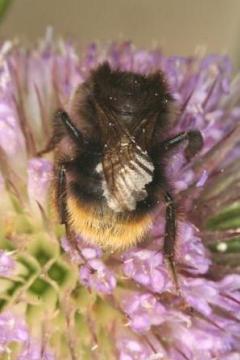Species Account for Bombus ruderarius
Bombus ruderarius (Mueller, 1776)
Red-tailed Carder Bee
Aculeata: Apinae: Apinae

Reproduction for study and non-profit use permitted, all other rights reserved.
Taxonomic group: honey bee and bumblebees (Aculeata: Apinae) - Countywide data
View time series maps for Bombus ruderarius
member log-on for taxon report
Status: Section 41 Priority Species
Images
upload a new image
Species text
Bombus ruderarius is a nationally declining species which at the time of publication of the Bumblebees of Essex (Benton, 2000) was still considered to be widespread, but local, in the county. However current evidence suggests a drastic decline has occurred, with sites where the bumblebee used to occur in numbers a few years ago now apparently without populations. Like other declining bumblebees, the species requires extensive areas which support a variety of flowering plants, especially Fabaceae and Lamiaceae, and it is essential that suitable forage resources are available throughout the flight period of the colony. The nest is constructed of grass clippings and moss on or just above the ground among long vegetation, often using an old mouse nest as a foundation (Edwards & Telfer, 2001). References
Habitats
Recorded management for locations with Bombus ruderarius
Recorded substrate and hydrology for locations with Bombus ruderarius
Why not join the Club, register and add a new species page
Interpretation of distribution maps



















